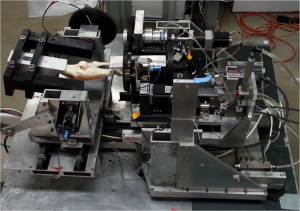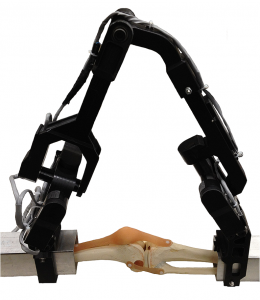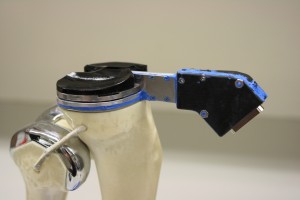The Orthopaedic Biomechanics Laboratory is housed within the 8000 square foot Orthopaedic Research Laboratory (ORL) at the UC Davis Medical Center in Sacramento, CA. Research in the Orthopaedic Biomechanics Laboratory focuses on total joint replacement primarily of the knee (TKR). As background, more than 700,000 patients undergo TKR in the US alone each year. Unfortunately 20 – 25% of these patients have an unsatisfactory outcome due to persistent pain, instability, stiffness, and/or implant failure. These poor clinical results can be traced to the conventional method for aligning the implants on the bones.
To improve the clinical results, about 10 years ago our research group conceived a new method for aligning components termed kinematic alignment and developed two novel surgical techniques for achieving the desired alignment. After performing the surgery on more than 4000 patients and following up on these patients, the results indicate that subjective patient-reported outcomes are better than those of patients who have been treated with conventional alignment methods and surgical techniques. One broad goal of our research is to conduct high quality research projects which examine all dependent variables that provide objective measures of knee joint function for both kinematic alignment and conventional alignment methods. A second broad goal is to optimize the implant designs so that kinematic alignment restores knee function as closely as possible to that of the prearthritic (i.e. healthy) knee.
Many challenging and purposeful research project are available to graduate students which include experimental projects on cadaveric knees, experimental projects on patients both during surgery and after surgery, and computer-based projects simulating TKR on 3D bone models. Some projects involve advanced applications of biomedical imaging such as Roentgen stereophotogrammtric analysis and 3D model-to-2D image registration. For the aspiring graduate student, this is an unique and timely opportunity to conduct research with immediate clinical impact which benefits the millions of patients who will undergo TKR in the coming years.



